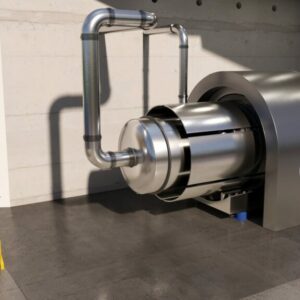"One of the reasons casings are such a key focus is because securing secondary materials at high quality is a key challenge for the EV market. If you look at all the aircraft that are going to be retired between now and 2030-2035, there’s over 50 million battery casings for EVs that could be made."
How AI is Helping Nations Balance Their Power Grids
AI-optimized systems will be crucial in ensuring a smooth and effective green energy addition.
Scientists just set a nuclear fusion record in a step toward unleashing the limitless, clean energy source
"The experiment is the last of its kind for JET, which has operated for more than 40 years. Its last experiment — and new record — is promising news for newer fusion projects, said Ambrogio Fasoli, CEO of EUROfusion, the consortium of 300 experts behind the experiment. He pointed to ITER, the world’s biggest tokamak being built in southern France, and DEMO, a machine planned to follow ITER with the aim of producing a higher amount of energy, like a fusion plant prototype."
The U.S. Military Looks to Geothermal for Secure, Firm Power
"Unlike wind turbines or solar arrays, electricity production from geothermal doesn’t rely on weather conditions, making it extremely reliable. And for this reason, the U.S. military is showing more interest in geothermal technologies to harden its facilities against power grid outages and cyber-attacks."
This Georgia refinery is making low-carbon jet fuel from alcohol
"The ribbon-cutting event drew attendance from U.S. Agriculture Secretary Tom Vilsack and Department of Energy officials, as well as the company’s top financial backers. The Microsoft Climate Innovation Fund invested $50 million and Bill Gates’ Breakthrough Energy awarded a $50 million grant, both in 2022, to support construction of the first-of-a-kind facility."
Prodigy and Westinghouse Targeting Launch of eVinci Floating Nuclear Plant in Canada by 2030
"Prodigy underscores flexibility will be a key driver for the emerging FNPP market. But rather than developing reactors, its approach is to partner with leading SMR vendors to offer a standardized, scalable, and fully transportable nuclear power plant system—essentially by linking expertise in three mature industries: nuclear, maritime, and transport."
Hate Your Heating Bill? The New Heat Pumps Could Help
"A heat pump is a home heating and cooling system with an outdoor compressor that extracts the tiny amount of heat energy that exists in cold outdoor air, concentrates it and then pumps it indoors using a refrigerant and a heat exchange system. From there, fans circulate warm air throughout the house through ducts or units similar to wall-mounted radiators."
The University of Illinois Wants to Build a Mini Nuclear Reactor. Here’s Why
"The university has a history with nuclear power: It operated a reactor on the campus for research purposes, for almost four decades until 1998. Now it is exploring a smaller and safer microreactor concept that could be built quickly and relatively cheaply in a factory, rather than a traditional reactor which takes years to construct and costs billions of dollars."
Green Horizons: Three Climate Solutions Set to Flourish in 2024
As we step into 2024, these three climate solutions are ready to create pathways to lower emissions and promote economic development.
AI is Streamlining Permitting for Solar Projects Across the U.S.
Artificial intelligence is well poised to play a crucial role in optimizing and expediting the deployment of innovative, trailblazing solutions.
Copyright © 2020 Conservative Coalition for Climate Solutions








